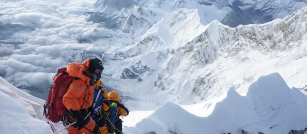5 Ways to Improve Your Photography Skills

Table of contents
In today’s image-driven society, photographs have a profound impact on how we see the world. We’re all in pursuit of capturing that perfect shot, but it’s important to remember that photography is an art. Simply snapping hundreds of pictures a day doesn’t automatically result in stunning images.
For those who want to elevate their photography skills, investing in quality gear is essential. A great place to start is by exploring products from C.R. Kennedy Photo Imaging, an online supplier offering a wide range of camera equipment and accessories. Having the right tools can make a significant difference in the quality of your photos, and when paired with the right techniques, your images will truly stand out.
Many photographers spend years mastering their craft, learning the ins and outs of camera settings and post-processing. However, if you’re passionate about photography but don’t have the luxury of time for extensive study, consider these five proven methods that are guaranteed to improve your photographic skills.
Use a Tripod
Getting used to the use of a tripod can take some time. Once you do, you’ll understand why it’s so highly recommended. A well-adjusted tripod has the power to elevate your landscape images to a whole new level. It ensures you don’t miss those fleeting sunrise moments due to shaky hands and facilitates pre-planning and composition of your shots.
With your camera securely mounted on the tripod, you’re afforded all the time you need to precisely arrange your desired photo outcome. You can experiment with different focus modes and assess whether you prefer a colored or black-and-white image. The tripod provides the freedom to explore and experiment with various photography styles without the pressure of hurried, random shooting.
Request Input
Initially, exposing your work to others might seem terrifying. However, organizing photography workshops can assist you in determining your shortcomings and areas that require enhancement. Photo-sharing platforms like Flickr have communities where you can upload your pictures for evaluation.
If you’re not yet prepared to make your work public, ask photography buffs in your network to review your work. While it’s useful, it’s not necessary to be proficient in using post-processing tools to facilitate your shots. Occasionally, minor adjustments in your photography arrangement, understanding, and strategy are all that’s needed to capture superior photos.
Shoot More
The simplest and most typical method to enhance your photography skills is by taking more pictures. This doesn’t imply continuously pressing the shutter button and capturing in rapid-fire mode. It means increasing the frequency of your photo sessions. Like any other craft, the more you practice, the more proficient you become.
Set a goal for yourself to engage in your preferred style of photography. Instead of aimlessly wandering and snapping photos, plan and approach it as you would a professional shoot. Your chances of performing well increase with preparation.
Consider setting a goal to work on areas you might need improvement. For instance, if photographing in low light conditions is challenging, consciously practice this repeatedly until you notice progress in your photos.
Study Light
The direction and quality of light on your subject can substantially alter your photograph. Key aspects to carefully evaluate include the light’s color, level of light present, rigidity or malleability, and origin.
- Color: Naturally, warm light (yielding golden shades) is observed right after sunrise and just before sunset. However, you can change the color or warmth of the light by managing your camera’s white balance setting to match your preferred aesthetic. You can create a colder (bluer) light effect using these settings or capture photos in the shade, at noon, or in the hour leading up to sunrise and post-sunset.
- Harsh vs soft: Harsh light results in pronounced shadows. The most intense natural light usually occurs in the middle of the day. When photographing under harsh light, aim to leverage the shadows creatively, making them an integral part of your image to add depth. Conversely, soft or diffused light produces gentle shadows, often favored for portrait photography and most other photographic styles. This is typically achieved by reflecting light off a large, lightly colored surface.
Simple reflectors can include walls, concrete, or a flash bounced off a white ceiling. Alternatively, you can position a large semi-transparent object between your subject and the light source. Sunlight is naturally diffused or softened on a mildly cloudy day, where the sun’s rays filter through a thin layer of clouds.
Watch and Read
Photographers today are greatly advantaged by the vast amount of information readily accessible to them. They can tap into the knowledge of thousands of fellow photographers who share their insights through blogs, videos, and social media platforms. This plethora of resources not only offers inspiration to refine your craft, but also serves as a hub to answer any specific queries you may encounter.
However, the enormity of this information could be quite overwhelming. Hence, it’s recommended to establish a personal learning plan that you can adhere to. For example, if you aim to enhance your portrait photography skills, avoid the temptation of hopping from one topic to another.
Instead, devote considerable time solely to portrait photography before switching themes. Create a checklist of topics you desire to learn, areas you aim to better, and then practice incorporating what you’ve gleaned from your readings or viewings.
Endnote
Commitment to your craft demands constant self-improvement. Regardless of how impressive you believe your photographs to be, always remain receptive to feedback and strive for enhancement. Endeavor to make every picture you capture the best it can be. The most crucial advice for honing your photography skills is to practice every day. Sparing a few moments from your daily schedule for this purpose can significantly contribute to your development.
Remember, never travel without travel insurance! And never overpay for travel insurance!
I use HeyMondo. You get INSTANT quotes. Super cheap, they actually pay out, AND they cover almost everywhere, where most insurance companies don't (even places like Central African Republic etc!). You can sign-up here. PS You even get 5% off if you use MY LINK! You can even sign up if you're already overseas and traveling, pretty cool.
Also, if you want to start a blog...I CAN HELP YOU!
Also, if you want to start a blog, and start to change your life, I'd love to help you! Email me on johnny@onestep4ward.com. In the meantime, check out my super easy blog post on how to start a travel blog in under 30 minutes, here! And if you just want to get cracking, use BlueHost at a discount, through me.
Also, (if you're like me, and awful with tech-stuff) email me and my team can get a blog up and running for you, designed and everything, for $699 - email johnny@onestep4ward.com to get started.
Do you work remotely? Are you a digital nomad/blogger etc? You need to be insured too.
I use SafetyWing for my digital nomad insurance. It covers me while I live overseas. It's just $10 a week, and it's amazing! No upfront fees, you just pay week by week, and you can sign up just for a week if you want, then switch it off and on whenever. You can read my review here, and you can sign-up here!













 As you know, blogging changed my life. I left Ireland broke, with no plan, with just a one-way ticket to Thailand
and no money. Since then, I started a blog, then a digital media company, I've made
more than $1,500,000 USD, bought 4 properties and visited (almost) every country in the world. And I did it all from my laptop as I
travel the world and live my dream. I talk about how I did it, and how you can do it too, in my COMPLETELY FREE
Ebook, all 20,000
words or so. Just finish the process by putting in your email below and I'll mail it right out to you immediately. No spam ever too, I promise!
As you know, blogging changed my life. I left Ireland broke, with no plan, with just a one-way ticket to Thailand
and no money. Since then, I started a blog, then a digital media company, I've made
more than $1,500,000 USD, bought 4 properties and visited (almost) every country in the world. And I did it all from my laptop as I
travel the world and live my dream. I talk about how I did it, and how you can do it too, in my COMPLETELY FREE
Ebook, all 20,000
words or so. Just finish the process by putting in your email below and I'll mail it right out to you immediately. No spam ever too, I promise!
